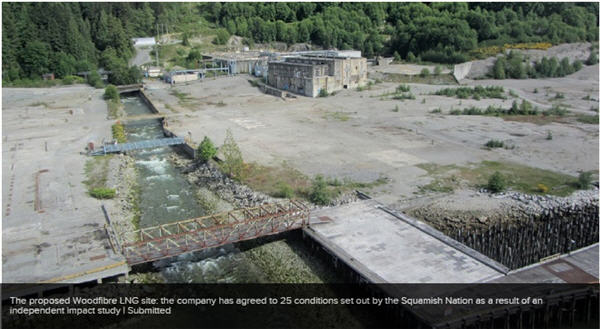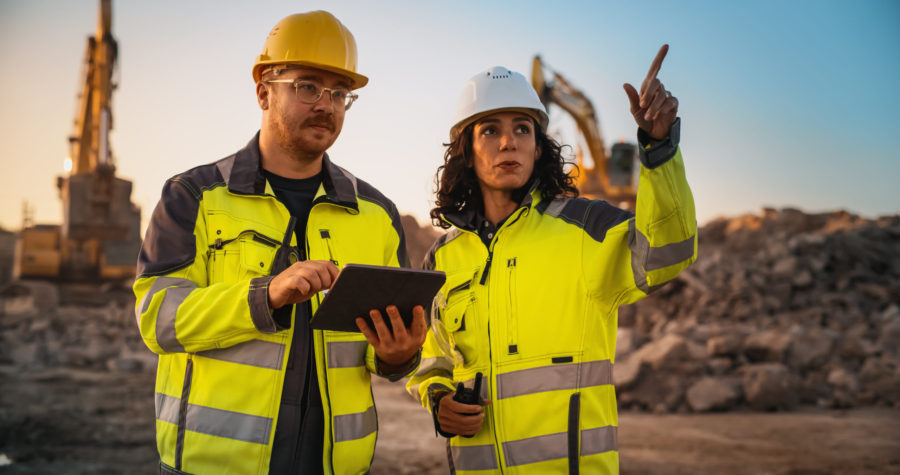New landscape for BC mining environmental reviews
First Nations’ project impact studies redrawing the province’s resource extraction landscape

When the B.C. Environmental Assessment Office hit the pause button on the Woodfibre LNG project in Squamish on June 30 following the conclusion of an independent environmental impact study by the Squamish Nation, it could have been seen as a sign the project was in trouble.
First Nation support for resource projects, after all, has become increasingly important to their success.
In the case of the Trans Mountain pipeline project, a highly detailed independent environmental impact study the Tsleil-Waututh Nation released in May has been used to bolster its opposition to the pipeline twinning project.
A number of Simon Fraser University (SFU) scientists were involved in the study, which led to the Tsleil-Waututh’s unanimous vote against the project.
But as the Woodfibre LNG case demonstrates, not every First Nation that undertakes its own impact study necessarily does so with a predisposition against the project.
Unlike the Tsleil-Waututh study, which was done outside the environmental assessment (EA) process and without the co-operation of proponent Kinder Morgan Inc. (NYSE:KMI), the Squamish study was done with Woodfibre LNG’s approval.
Both the regulator and proponent agreed to amend the EA process to formally include the independent study, said Squamish Nation lawyer Aaron Bruce.
On August 11, Woodfibre LNG announced it had agreed to all 25 conditions that the Squamish Nation placed on the project as a result of its study. The 180-day EA clock for Woodfibre is now ticking again.
But that doesn’t necessarily mean the Squamish Nation has given its full approval to the project.
“While the Squamish Nation continues to discuss its conditions with Woodfibre LNG, the nation has not yet come to a decision on the proposed project,” said Squamish Chief Ian Campbell.
However, Bruce said that, as a result of the study, “the comfort level has gone way up for Squamish on this.”
From the beginning, Bruce said, the Squamish have taken a neutral position on the $1.7 billion project.
“If the starting point was being opposed to it, we would have been going to court.”
The commissioning of independent environmental impact studies by First Nations – either outside of or parallel to the EA process – appears to be a growing trend in B.C.
Although provincial and federal environmental review processes weigh First Nations’ concerns, their primary objective is to examine the environmental impacts of a proposal and look at ways of mitigating them, based on impartial science.
But many First Nations have become cynical toward provincial and federal regulators.
“Aboriginal people feel that their interests are not well represented on a typical governmentally sponsored process and, in particular, that their special interests are not given enough weight,” said Peter Pearse, a professor emeritus of economics and forestry at the University of British Columbia who has headed several public inquiries related to resource industries.
The B.C. Environmental Assessment Office has been accused in the past of rarely rejecting a mining or oil and gas project. And cutbacks, offloading and streamlining at the federal level – which includes now allowing some projects to be reviewed by the province alone, rather than by both provincial and federal agencies – have added to that cynicism.
Because proponents are required to pay for the science, there’s a suspicion that they get what they pay for.
“The bigger problem is that, over the years, some environmental consultants have become more like advocates for their clients and less like the independent scientists they are supposed to be,” said David Austin, a Clark Wilson LLP lawyer specializing in energy.
“This is the main reason that some First Nations have hired their own consultants.”
The Pacific NorthWest LNG project has come under fire by First Nations who feel they’re not well represented under the ongoing federal review by the Canadian Environmental Assessment Agency (CEAA).
The LNG plant would be located near Flora Bank – eelgrass habitat in the Skeena River estuary that is critical rearing habitat for salmon.
Under the current review process, only First Nations that would be directly affected by the project have been consulted and offered benefits agreements by the proponent, Petronas, including a $1.2 billion offer made to and rejected by the Lax Kw’alaams.
First Nations outside the immediate area have taken issue with being excluded from the CEAA consultation process.
In the August 7 issue of Science, a letter co-written by SFU fisheries biologist Jonathan Moore and several First Nations chiefs and biologists within the Skeena watershed says the scope of the process is too limited.
Based on DNA sampling, the salmon that rear in Flora Banks are known to travel extensively inland, which the writers argue means several First Nations that depend on those fish should also be included in the EA consultation process.
Some contend that First Nations environmental impact studies that consider values important to them could help achieve buy-in for projects that might otherwise be viewed with suspicion, if those studies happen to agree with the science of the proponents.
But Brent Stafford, founder of Regulator Watch – a Canadian regulatory watchdog – finds the trend troubling.
An environmental assessment, whether provincial or federal, is supposed to be an arm’s-length process based on impartial science, not one that pits the science of one special-interest group against another.
Stafford sees the trend of environmental groups and First Nations doing their own assessments as an erosion of confidence in the government processes.
“This trend is driven by the overall movement to undermine the credibility of regulators,” he said. “The goal is to seed and nurture doubt amongst the public.
“Granted, the government has created some perception problems, as it offloaded the responsibility of conducting the environmental studies to the proponents. Proponents hire the firms and pay for the independent research, and that has opened up channels of criticism.
“Activists say, ‘You can’t trust the research because it was paid for by the company.’ Yet, with this new trend, activists are saying, ‘You can trust our research, which we paid for.’ It makes little sense.
“The worry here is that all research becomes undermined as a result of competing studies.”
Read at Business in Vancouver
More News
Rio Tinto, Founders Factory’s Mining Tech Accelerator invests in startups from US and OZ
April 23, 2025 | 04:02 pm
{{ commodity.name }}
{{ post.title }}
{{ post.date }}



Comments